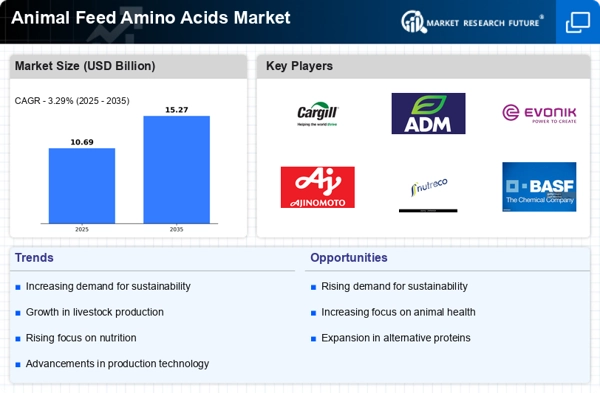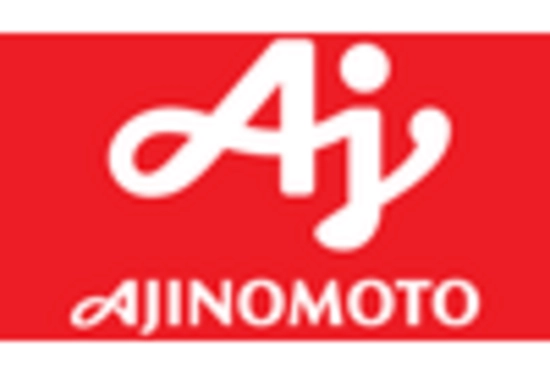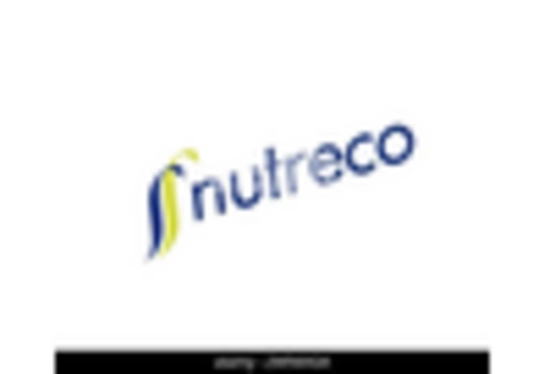Rising Demand for Animal Protein
The increasing The Animal Feed Amino Acids Industry. As consumers become more health-conscious, the preference for protein-rich diets has surged, leading to higher meat consumption. According to recent data, meat production is projected to reach approximately 350 million tons by 2025, necessitating enhanced feed formulations. Amino acids play a crucial role in optimizing animal growth and feed efficiency, thereby supporting the livestock sector in meeting this burgeoning demand. Consequently, the Animal Feed Amino Acids Market is likely to experience substantial growth as producers seek to improve the nutritional quality of animal feed to satisfy consumer preferences.
Regulatory Support for Nutritional Standards
Regulatory frameworks aimed at improving animal health and nutrition are increasingly influencing the Animal Feed Amino Acids Market. Governments and regulatory bodies are implementing stringent guidelines to ensure that livestock receive balanced diets, which include essential amino acids. These regulations are designed to enhance food safety and quality, thereby promoting public health. For instance, the introduction of standards for amino acid supplementation in animal feed is expected to drive market growth. As a result, feed manufacturers are compelled to innovate and incorporate amino acids into their products, thereby expanding the Animal Feed Amino Acids Market. This regulatory support not only fosters compliance but also encourages advancements in feed formulations.
Technological Innovations in Feed Production
Technological advancements in feed production processes are transforming the Animal Feed Amino Acids Market. Innovations such as precision fermentation and enzymatic processes are enhancing the efficiency of amino acid production. These technologies enable the synthesis of amino acids in a more sustainable and cost-effective manner, which is crucial for meeting the increasing demand for high-quality animal feed. Furthermore, the integration of data analytics and artificial intelligence in feed formulation is optimizing nutrient profiles, thereby improving animal performance. As these technologies continue to evolve, they are likely to drive the growth of the Animal Feed Amino Acids Market by providing tailored solutions that meet the specific needs of livestock.
Expansion of Aquaculture and Pet Food Sectors
The expansion of the aquaculture and pet food sectors is emerging as a significant driver for the Animal Feed Amino Acids Market. As the demand for seafood continues to rise, aquaculture is becoming a vital source of protein, necessitating the use of amino acids to optimize fish growth and health. Additionally, the pet food market is witnessing a surge in demand for high-quality, protein-rich formulations, which often include amino acids to enhance palatability and nutritional value. This dual expansion in both aquaculture and pet food sectors is likely to propel the Animal Feed Amino Acids Market forward, as manufacturers seek to develop specialized products that cater to these growing markets.
Growing Awareness of Animal Health and Welfare
The rising awareness of animal health and welfare is significantly impacting the Animal Feed Amino Acids Market. Consumers are increasingly concerned about the conditions in which livestock are raised, leading to a demand for higher welfare standards. This shift is prompting producers to invest in better nutrition, including the incorporation of essential amino acids in animal feed. Research indicates that adequate amino acid levels can enhance animal health, improve growth rates, and reduce disease susceptibility. Consequently, the Animal Feed Amino Acids Market is likely to benefit from this trend as producers strive to meet consumer expectations for ethically sourced and nutritionally balanced animal products.


















Leave a Comment